Diver Spots Two Starfish Fighting for a Plastic Bag on Seafloor — Soon Realizes What Was Happening
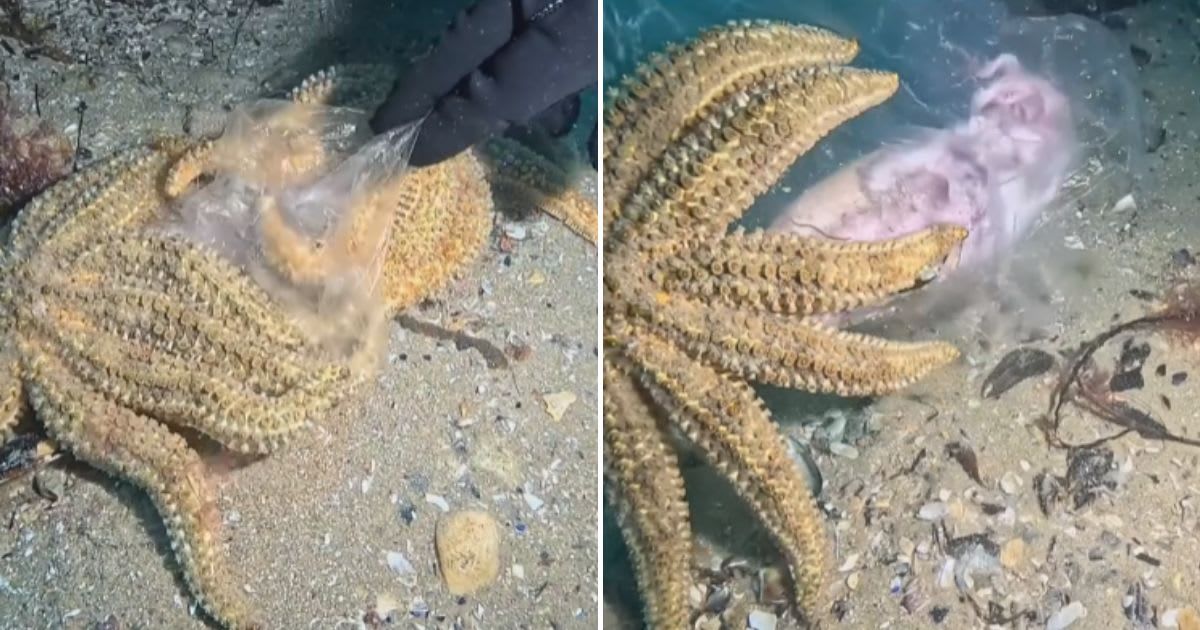
From the depths of the Mariana Trench to the peak of Mount Everest, there’s barely any place left on Earth where plastic hasn’t seen the light of day. While we know of the devastation the wonder material has caused on land, the aquatic ecosystem is one of the most affected ecosystems by plastic pollution. In a rare video shared by a diver and underwater photographer, Jules Casey, on her Instagram page, @onebreathdiver, she captured a heartbreaking scene underwater. Two massive starfish clung onto a bag of plastic that contained frozen fish, but could not get through the plastic material to reach the food. The diver could not resist but offer a helping hand and free them from the plastic barrier.
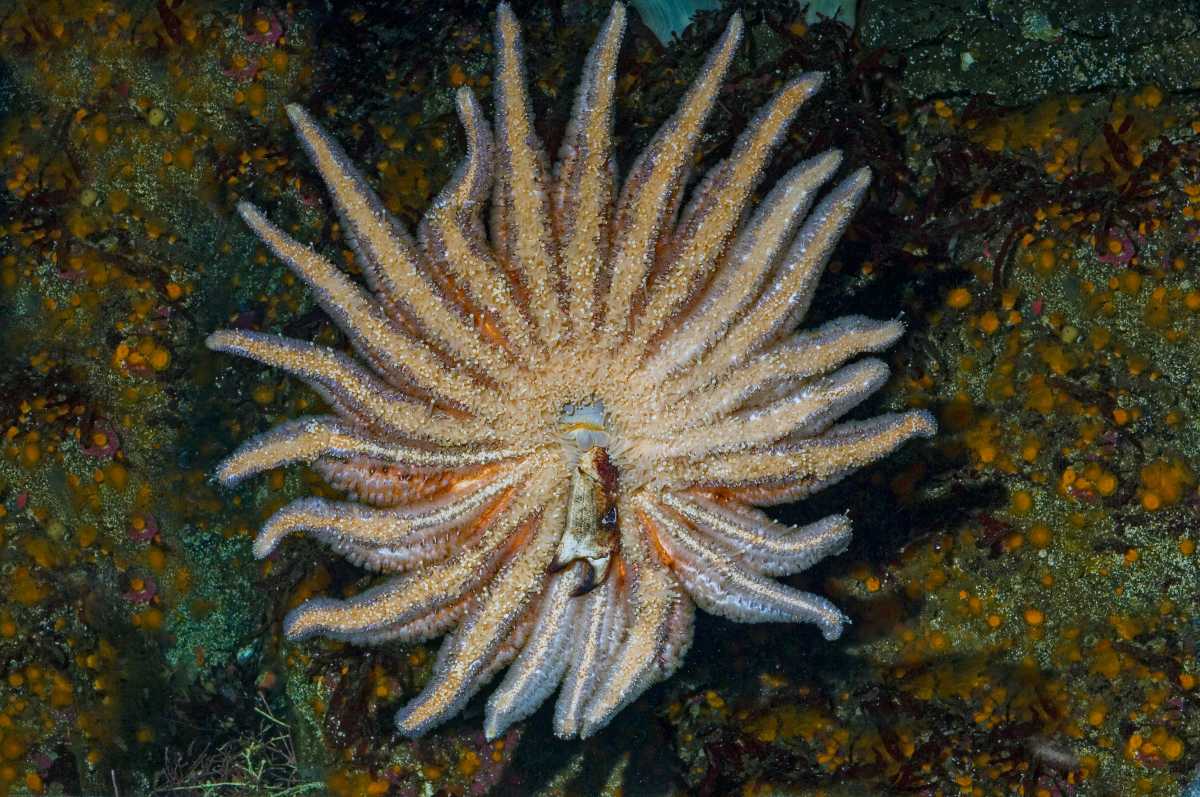
Starfish battle plastic pollution
The diver filmed two eleven-armed starfish fighting over a plastic bag of frozen fish. Casey presumed the bag was tossed underwater from the pier by a fisherman. The starfish lay static with the plastic bag entangled in them. The diver was quick to notice the gravity of the situation and decided to detach the poor creatures trying to feed through the plastic. She gently pulled on the plastic bag, trying to release the fish from it. However, the starfish had a firm grasp on the plastic and refused to let go.
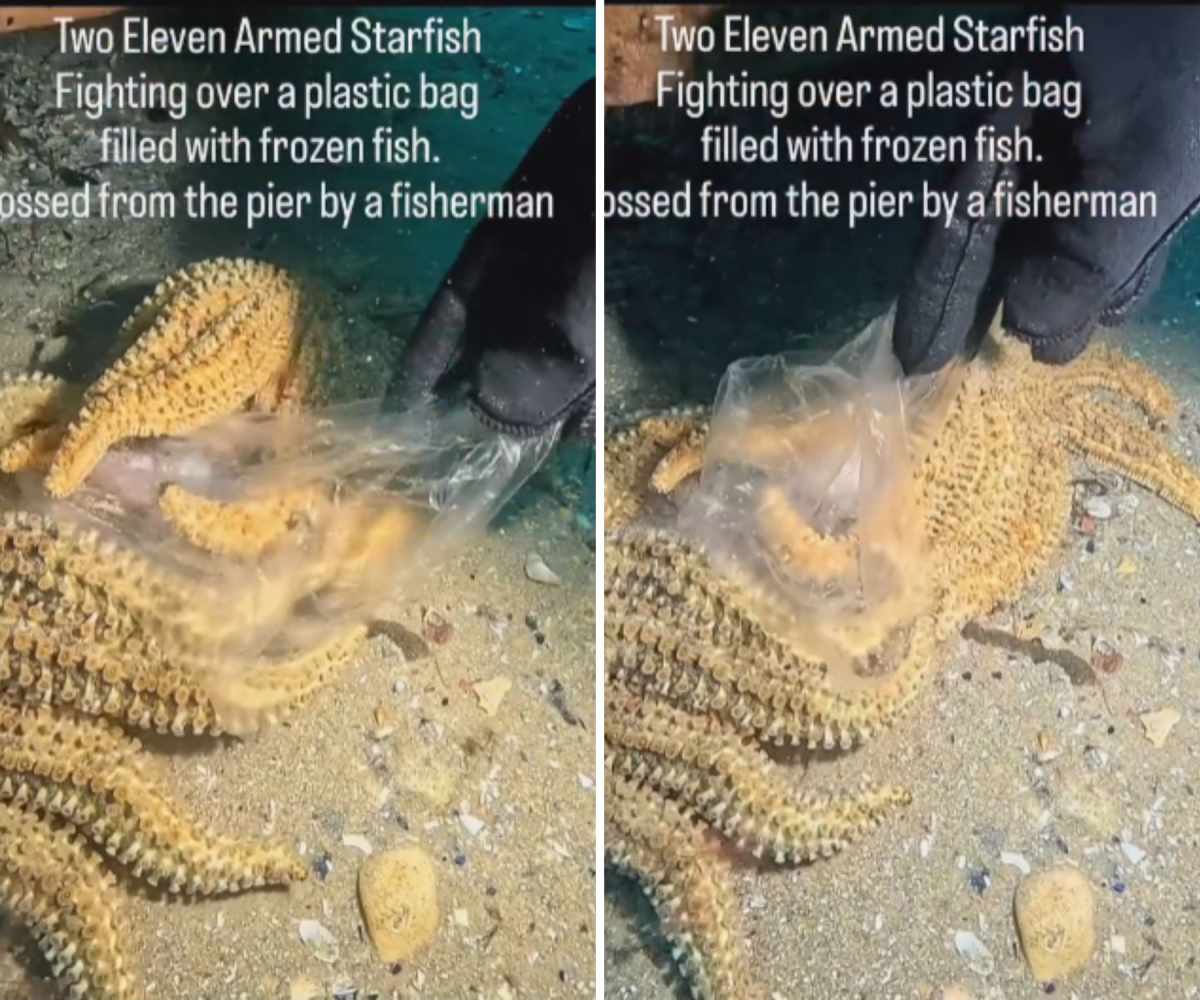
Eventually, Casey tried harder to force the plastic out of the starfish’s grip and rattled the bag. Finally, the frozen fish fell out, and once again, the two starfish had their arms on it. The diver carried the plastic out of the water with her. The natural moment filmed by the diver garnered ample attention on the internet with 3.3 million views. Several people condemned the act of plastic pollution. One viewer (@mangosea_scienceeducationart) wrote, “Seriously, they couldn’t even be bothered to empty it out of the plastic! Thank you, as usual.” While @bertaroja marked, “I like thinking about the moment the stars landed back on the ‘unwrapped’ fish. ‘Score!’”
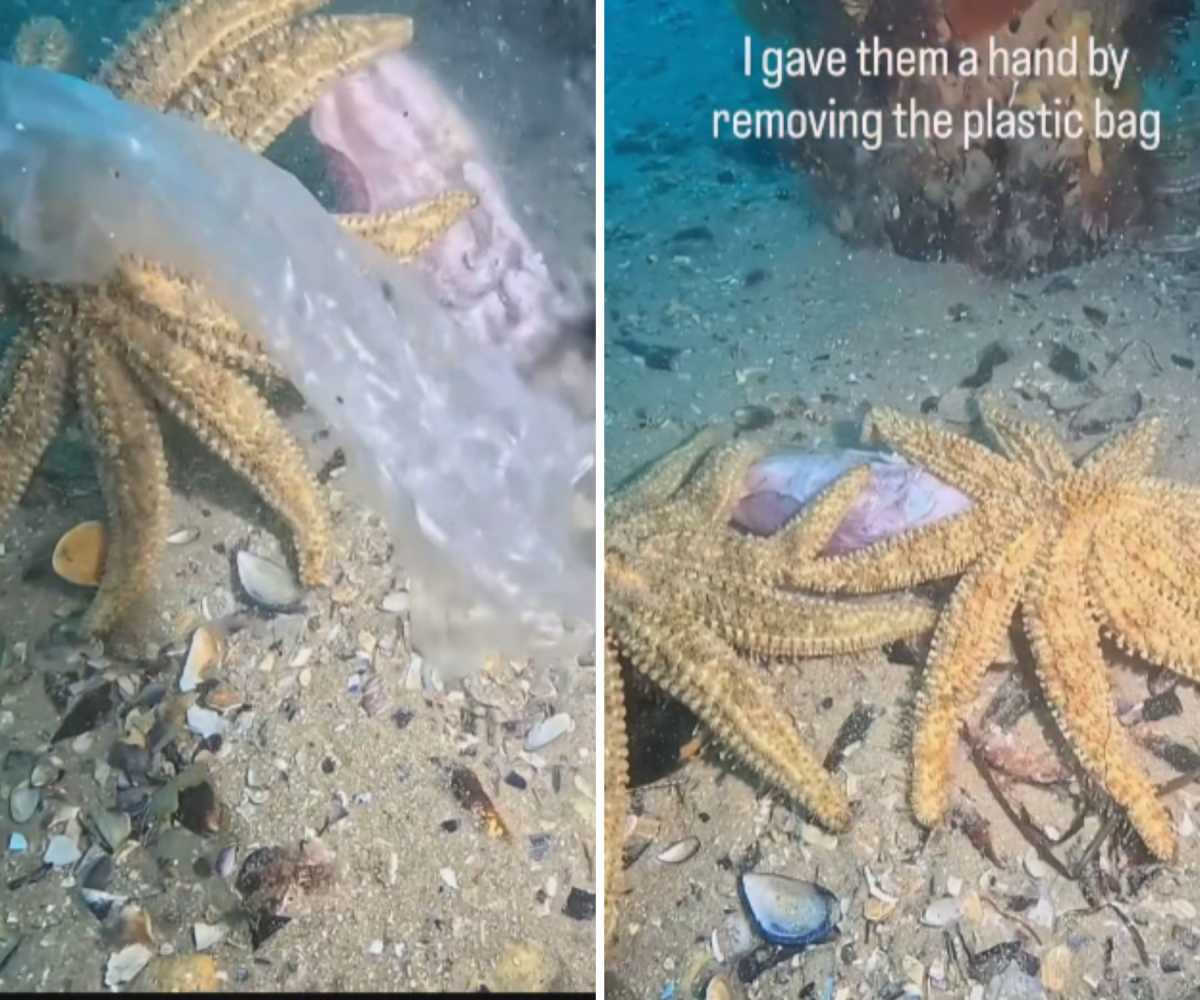
Some others contested the diver’s claim about a fisherman tossing the plastic into the water. “I’ve had birds steal my bag of bait before and drop it in the water,” revealed @clobber_qwq. @kasenvanmorkhoven_fishing had a similar sentiment. “It could have accidentally been kicked off or slipped off the bait cutting board,” the note read. However, the majority of viewers thanked Casey for her efforts and bravery in protecting the vulnerable aquatic creatures from the wrath of plastic and human recklessness.
Plastic pollution disrupts marine food webs
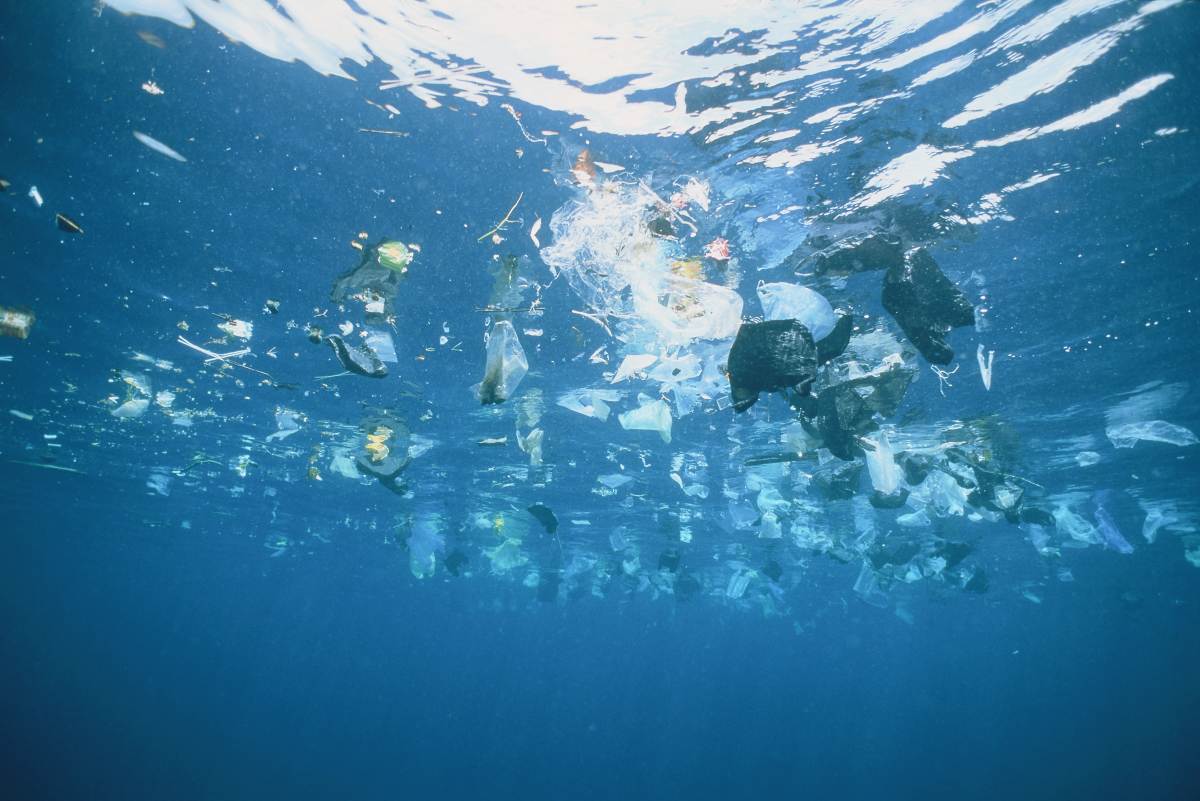
According to a published study in the journal Management and Protection, scientists directed their research on the detrimental effects of plastic pollution in aquatic ecosystems. While plastic is visible on land and water, the main problem arises with microplastics and nanoplastics. Upon constant exposure to sun or water, large pieces of plastic break into smaller fragments called microplastics– a major source of concern. When aquatic organisms ingest these contaminants with their food, they are eternally transferred to the next organism in the food chain, up until the apex predators themselves– humans. @cgtnamerica explained how tons of plastic waste end up in aquatic ecosystems on YouTube.
Ingestion of microplastics results in shock, ulcerating sores, blocked digestive tracts, and internal injuries among a myriad of issues. These microscopic bits of plastic also disrupt their feeding behaviors, alter metabolic function, and form tumors in marine creatures. According to Fauna & Flora, large marine mammals are the most vulnerable to plastic entanglement, and about 300,000 whales, dolphins, and porpoises die every year from fishing gear entanglement, per BBC.
You can follow @onebreathdiver on Instagram for more videos.
More on GreenMatters
Woman Offers Large Shell to Hermit Crab Living Inside a Piece of PVC Pipe. Here’s What Happened